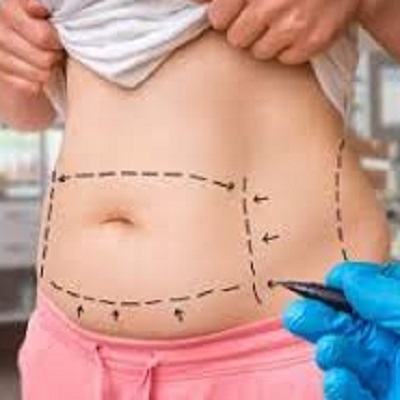Introduction
Liposuction, also known as lipoplasty, is a popular cosmetic procedure designed to remove excess fat from various areas of the body. It’s often sought after by individuals who struggle with localized fat deposits that don’t respond to diet and exercise. Despite its popularity, the safety of liposuction is frequently questioned, and many potential patients have concerns about its risks and outcomes. In this article, we’ll explore the safety of liposuction by addressing common concerns and risks associated with the procedure at Liposuction Surgery Clinic in Muscat.
Understanding Liposuction
Liposuction involves the removal of fat through a cannula, a thin tube that is inserted into the body through small incisions. The procedure is typically performed under local or general anesthesia, depending on the extent of the surgery. The fat is suctioned out using a vacuum-like device. Liposuction can be performed on various areas of the body, including the abdomen, thighs, buttocks, arms, and neck.
Types of Liposuction
There are several techniques for liposuction, each with its own set of risks and benefits:
- Traditional Liposuction: Uses a manual suction device.
- Ultrasound-Assisted Liposuction (UAL): Uses ultrasound energy to liquefy fat before suction.
- Laser-Assisted Liposuction (LAL): Uses laser energy to melt fat.
- Power-Assisted Liposuction (PAL): Utilizes a vibrating cannula to break up fat cells.
Common Concerns and Risks
1. Anesthesia Risks
Liposuction procedures generally require anesthesia, which carries inherent risks. Local anesthesia is used for smaller areas, while general anesthesia might be required for larger areas or more extensive procedures. Risks associated with anesthesia include allergic reactions, respiratory issues, and cardiovascular complications. It’s crucial to choose a qualified anesthesiologist and discuss any potential risks beforehand.
2. Infection and Wound Healing
As with any surgical procedure, there is a risk of infection. Proper preoperative preparation, sterile techniques during the procedure, and diligent postoperative care can minimize this risk. Patients are typically prescribed antibiotics to prevent infection. Additionally, wound healing can vary based on individual factors such as overall health, smoking habits, and adherence to aftercare instructions.
3. Complications from the Procedure
Complications specific to liposuction include:
- Seroma: Accumulation of fluid in the treatment area.
- Hematoma: Collection of blood outside blood vessels.
- Fat Embolism: Rare, but serious condition where fat enters the bloodstream and blocks a blood vessel.
Most complications are manageable with proper care and prompt medical attention. However, it’s important to discuss these potential issues with your surgeon before undergoing the procedure.
4. Skin Irregularities and Contour Deformities
Post-surgery, patients might experience skin irregularities such as lumps, bumps, or contour deformities. These issues can arise due to uneven fat removal or skin elasticity. Many of these concerns resolve over time, but in some cases, additional procedures might be needed to correct them.
5. Potential for Excessive Fat Removal
Excessive fat removal can lead to a distorted appearance and potential health complications. Surgeons typically adhere to guidelines that limit the amount of fat removed in a single session to ensure safety and avoid adverse outcomes. It’s essential to discuss your desired results and any concerns with your surgeon to establish realistic goals.
Preoperative and Postoperative Care
Preoperative Considerations
Choosing a board-certified plastic surgeon is vital for ensuring a safe and effective procedure. During your preoperative consultation, discuss your medical history, any medications you are taking, and your aesthetic goals. Your surgeon will provide guidelines for preparing for surgery, including recommendations for discontinuing certain medications and avoiding smoking.
Postoperative Care
Postoperative care is crucial for a smooth recovery. Follow your surgeon’s instructions regarding wound care, activity restrictions, and medication use. Wearing compression garments as advised can help reduce swelling and support the healing process. Regular follow-up appointments with your surgeon will monitor your recovery and address any concerns that arise.
Conclusion
Liposuction, like any surgical procedure, carries inherent risks. However, when performed by a qualified and experienced surgeon, it is generally safe and effective for removing localized fat deposits. Understanding the common concerns and potential risks associated with liposuction can help you make an informed decision and prepare adequately for the procedure. By choosing a skilled surgeon, adhering to preoperative and postoperative guidelines, and maintaining realistic expectations, you can maximize the safety and success of your liposuction experience.





Comments